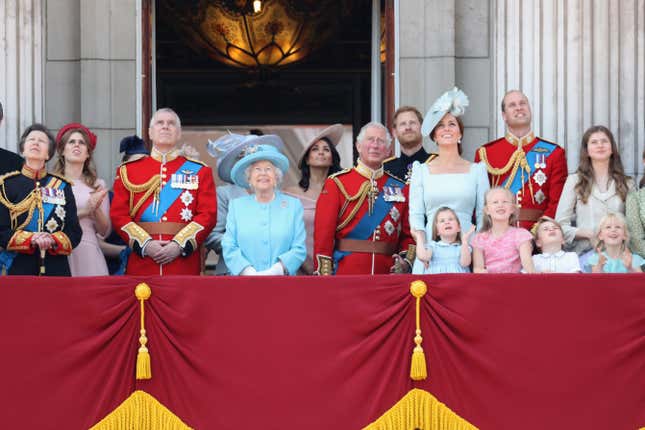The Actress and the Prince
In Depth

Archie Mountbatten Windsor, great-grandson to the Queen of the United Kingdom, nearly dove off his mother’s lap while she was reading, in pursuit of a different board book—then threw that preferred choice to the floor. Meghan briefly locked amused eyes with his father, who was laughing behind the camera. The video was both public commemoration of Archie’s first birthday and fundraising appeal for coronavirus relief on behalf of British charity Save the Children UK. But while most saw a cute video of a mother and squirmy baby, chick-lit writer Emily Giffin saw something different.
“Unmaternal” and “phony,” Giffin wrote in an exchange she shared on Instagram for nearly 90,0000 followers. This perception of Meghan as fake has long lurked in the ugliest coverage—an idea that’s intimately connected to the fact that prior to marrying a Windsor, she was an actress. Piers Morgan called her a social climber and once snidely remarked on Twitter, “Once an actress…”; the Daily Mail suggested that she had an entire scheme to work her way into the universe of posh Brits: “Meghan’s mission to be Made In Chelsea: Thought hooking Harry was a happy coincidence? Her PR advisers and C-list friends reveal it all began with plans to bag a Brit… and to star in a posh TV reality show.”
The actress is low class, socially predatory, and fundamentally false
The narrative is clear and existed hundreds of years before Meghan: The actress is low class, socially predatory, and fundamentally false. Meghan’s offense, according to this logic, is two-fold: She’s an actress who actually bagged the prince. Princes aren’t supposed to marry actresses—just dally with them. And rather than simply thank her lucky stars, she has the nerve to want anything else at all.
The association between princes and actresses goes back to the arrival of women on the British stage in the 1660s. Previously, all roles were played by men, but when Charles II arrived on the throne—the “Restoration” of the monarchy, after decades of Puritan rule—he permitted the return of sanctioned theater and decreed that all women’s parts had to be played by women. While it was legal for these women to appear on stage, it certainly wasn’t uncontroversial; the act of a woman putting herself onstage, in public display, for money, meant she was morally suspect, both false and sexually available in a way that was intimately intertwined. Acting and sex work were the rare means of moneymaking and advancement for women; often, actresses came from the working class, putting them in the category of women who weren’t entitled to any sort of protection or “respectable” treatment.
-

-

-

-

-

-

-

-

-

-

-

-

-

-

-

-

-

-

-

-

-

-

-

-

-

-

-

-

-

-

-

-

-

-

-

-

-

-

-

-









































